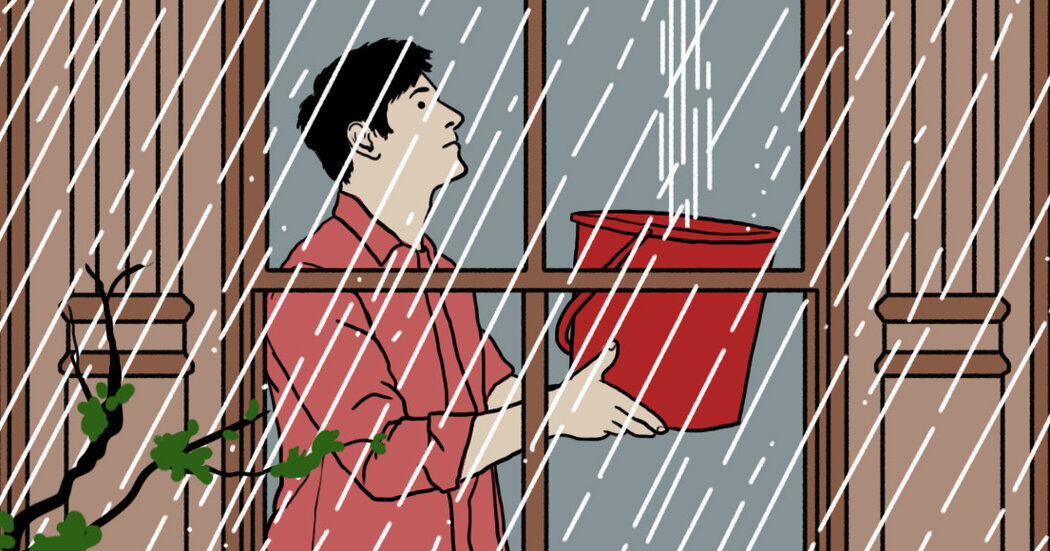[ad_1]

1st hour
Hear how to keep your nails from falling out, raise the height of your outdoor dryer vent, and more!
How to Keep Drywall Nails from Falling Out

One homeowner whose house was built in 1954 was tired of watching nails being pulled out of the drywall.
“How do I fix this? Can I drive the nail back in?” she asked.
First of all, knocking the pegs back is only a temporary fix – they will pop out again eventually. But the bigger question is: why did this happen?
Lots of movement in the home – closing doors, walking, etc. All of these movements cause vibrations. And, over time, these vibrations can cause the drywall nails to come off.
To fix this, you’ll need to remove the nails and replace them with screws, as drywall screws are a better choice.
You don’t want to just take the nail off and replace it with a screw before checking to see if it’s in the center of the stud or close to the center. The studs could be why it pops out.
Therefore, we recommend tapping the drywall with a hammer and nails until you find the center of the stud.
Once you’ve found the center and pulled the nail out, drive a drywall screw or two an inch or two above the old nail hole. This will hold it firmly.
After replacing the nails with drywall screws, place the joint compound In the screw heads and old nail holes, let dry, sand, then do it again. Once filled and sanded dry, it’s ready to be painted.
The screws hold on nicely, hopefully you never have to do this procedure again!
Watch: How to Replace Drywall Studs
How to Raise an Outdoor Dryer Vent

The homeowner’s dryer vent is located on the exterior wall and below the brick finish. It mounts about 1 inch from the ground, not 12 inches or more (recommended).
He’s having trouble getting rainwater into the vents and now asks: “Do you have any advice for me?”
First, few dryer vents are this low from the ground. The height above the ground was probably correct when the vent was originally installed. Over time, however, slope and landscaping can be added, and vents become closer to the ground.
For your dryer vent to work efficiently, you need the shortest path possible. Therefore, we do not recommend re-routing the current ductwork and through the soffit.
Instead, we recommend trying to raise or extend the existing vent upwards, or digging around the vent to give it more space. You can also turn and elbow slightly off the ground.
Check your local home center for a unit that can curl 90 degrees, which will help raise the height of the exterior vents. There are many dryer vent options.
To be on the safe side, don’t use PVC pipe for the elbow, as it won’t be able to withstand the heat from the dryer vent.
Also, make sure to clean your dryer vent frequently to prevent house fires and keep your dryer working efficiently.
2nd hour
Listen to learn about garbage disposal rules, how to fix a toilet that won’t flush, how to put a liner on a tile floor, and more!
what a garbage disposer can put down

A homeowner and his wife have been at odds over whether it’s okay to throw meat scraps in the garbage disposal. They have septic disposal.
“Can you settle this argument?” he said.
It is perfectly fine to have a garbage disposal with a septic tank. However, some septic tanks are really good and others are marginal. This plays a large role in how the processor functions and the waste it receives.
So, what can a garbage disposer put down?
When it comes to garbage disposals, you do want to use them sparingly and don’t throw everything in. You want to avoid putting down large amounts of material.
The answer to the question is yes, but only small pieces of meat, and don’t pack them full.
Make sure your garbage disposer is used and maintained properly. It is recommended to flush the waste down the drain with cold water, and make sure you don’t put anything in the garbage disposer without running it!
Use this trick if your garbage disposal is clogged!
How to Fix Toilet Flushing Problems

A homeowner is struggling to get her toilet to fully flush. She said she had to hold down the handle until the toilet was flushed.
She wondered, “Why is this happening and how can I fix it?”
There are two possible reasons why she has this problem. One, there wasn’t enough water in the tank, which meant the water stopped before reaching about a half inch below the overflow pipe. This is where you have to adjust.
Next, you need to make sure that when you press the handle, the flapper stays open for the flushing operation, and then closes. This is prevented if the chain is too short or too long.
Another cause is a clogged drain. If there is an obstruction, then you won’t be able to do the flushing operation as it will prevent water from getting into it.
This is most likely the first question. This is a very common repair method, and there are many great repair kits out there. Do it quickly so you don’t waste water!
While toilet repairs may not be the most glamorous form of home improvement, it’s important to have a working toilet that will last in good shape over time.
Further reading: A Guide to All the Parts of a Toilet Tank
How to Install Underlayment

The homeowner wanted a quarter inch underlayment on the tile floor.
“Do I need to fix it with nails or screws? What do I use?” he asked.
No, you don’t want to nail through or screw it down. You have to glue it down. Do some research and find the right adhesive for your needs based on the materials you’re using. Most likely, it will come in a bucket and you will use a notched spatula to install just the right amount.
Be sure to read the directions to make sure you are using the recommended notch spatula size. What many people don’t realize is that the notched spatula needs to be sized in relation to the adhesive to work properly.
To ensure that the floor does not move when laying it, use leftover blocks, bricks, or a heavy object to slightly depress the floor. Leave it overnight to dry and really set.
There are various options for padding. One option is a self-leveling underlayment. It’s like very thin concrete. Apply a thin coat over tile to create a smooth, flat surface for vinyl flooring.
Further reading: Glued vs Nailed Hardwood Floors
Best New Product
 |
The StyleWell Parker Mill 4-Piece Metal Patio Set is built to last and provides outdoor furniture you can depend on. Learn more>> |
simple solution

push broom paint prep— Before painting a room, it is very important to clean the walls and ceiling to remove all dust, grime and cobwebs. Here’s a quick and easy way: Wrap a towel around the head of a push broom and secure it with a binder clip or clip. Then lightly spray the towel with water. Now use a broom wrapped in a towel to wipe down the walls and ceiling. The damp towel will trap any dust or grime, leaving a clean, paint-ready surface. This trick is also great for removing joint compound dust from freshly sanded drywall joints.

Easy Access Garden Tool Storage—Most people store their lawn and garden tools in the garage or shed and simply stand them up and lean them against a corner. There’s nothing particularly wrong with this, it’s just a bit messy, and it’s hard to grab one tool without knocking over the other. So here’s a super easy solution to this problem: Take three concrete blocks and stack them wherever you want to store your tools. You end up with two deep compartments for long-handled tools. These blocks are heavy enough that you don’t have to worry about them tipping over no matter how many tools you put in them. If there is insufficient clearance, two blocks can be used to allow the tool to be lifted out. This will give you a neat place where your tools are out of the way and easy to access, and you don’t have to worry about them falling out.
further reading







